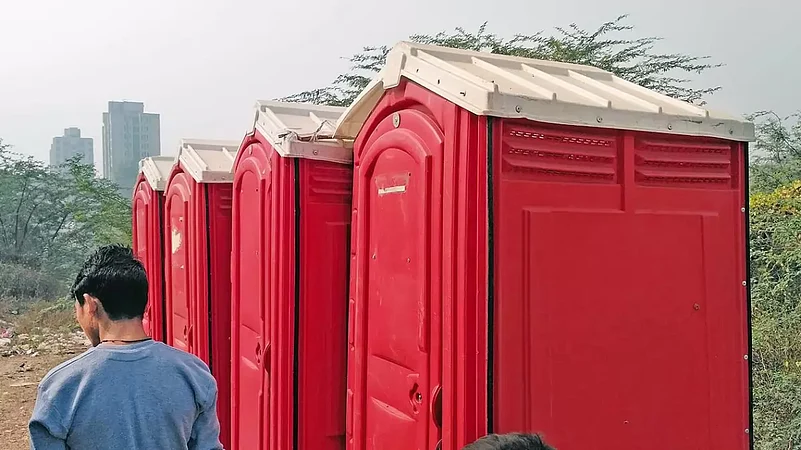The rapid growth of cities has outpaced the ability of current infrastructure and services to meet the needs of the people, especially when it comes to providing essential water and sanitation services. Moreover, insufficient measures to reduce the environmental impact of unsustainable groundwater extraction and inadequate treatment of waste such as faecal sludge, septage and greywater have led to the depletion of critical natural resources. These challenges have caused a shortage in service provision, disproportionately affecting the socio-economically disadvantaged and the growing urban poor.
The Water, Sanitation, and Hygiene (WASH) sector is plagued by complexities compounded by poorly planned and managed systems prioritising asset creation over service delivery. As a result, these systems often operate reactively and lack proactive planning and management, causing various local governments to fall short of official benchmarks regarding service quality, efficiency, and cost recovery.
Improved sanitation systems have significant environmental and financial benefits. They provide livelihood opportunities to marginalised groups through their involvement in the operation and maintenance of sanitation services while ensuring pollution abatement. Additionally, microfinance can play a crucial role in expanding access to sanitation by providing financial opportunities to users. Indirectly supporting the expansion of sanitation firms, blended approaches like loans and credit lines to microfinance institutions can operate to enhance the demand for sanitation services and assets.
Compartmentalising sanitation as a separate sector often leads to creating structures and services with limited functionality. However, studies have shown that sanitation can positively impact society only if specific prerequisites are met. These prerequisites include considering social and spatial aspects when designing public sanitation facilities, emphasising simplicity and innovation in design through community involvement, having strategic and sustained funding and revenue streams in place to tackle construction, operation and maintenance challenges, meaningful data collection on users and a multidimensional understanding of sanitation needs that encompasses academic, political and changing user perspectives. In other words, sanitation services must be inclusive and accessible to all.
The imperative for inclusive sanitation is not new; global and local organisations have advocated inclusive sanitation principles for over a decade. However, the focus has recently shifted towards a Citywide Inclusive Sanitation Approach (CWIS). It is a public service approach that ensures everyone in the city has access to adequate and affordable sanitation services through a combination of on-site and sewer solutions, either or both centralised and decentralised systems, without any environmental contamination along the sanitation value chain.
An example of a combination of solutions can be explained through one of the Ganga states of India, Uttarakhand. The Urban Uttarakhand State Development Agency collaborated with the National Institute of Urban Affairs (NIUA), the Asian Development Bank, the Indian Institute of Technology - Roorkee, and other partners to upgrade the sanitation infrastructure. The study focused on how left-out households in the city and peri-urban areas can coexist with networked sanitation. Interim and intermittent steps are employed to use the current and proposed treatment sites to co-treat faecal sludge and septage (FSS) with sewage in Dehradun, the state capital. A road map for expanding CWIS throughout the state has been proposed to ensure that everyone, predominantly low-income and marginalised, homes and communities, has access to sanitation. Eventually, co-treatment initiatives have assured that low-income communities, commercial establishments and regions with impractical sewer connections have equitable access to improved sanitation services. This indicates that significant investments from states and cities are necessary to overhaul existing urban infrastructure, particularly public sanitation facilities, to ensure universal access and elevate current sanitation standards.

In the area of providing accessible and equitable sanitation to all, NIUA is working with the Urban Development Directorate (UDD) of Uttarakhand on ‘Building a Swachh and Sugamya Uttarakhand for all: A roadmap to attaining citywide inclusive sanitation’ that addresses each stakeholder of the sanitation service chain. The NIUA team has proposed a three-phase approach to attain the goal. First, access to improved sanitation facilities for all; second, local ecosystem strengthening through innovation, investments and partnerships; and finally, community engagement and inclusion of marginalised groups.
This underscores the point that efforts must transcend diverse user needs, considering gender, age and ability, and strive for universal accessibility rather than just a barrier-free approach. Regardless of age, ability or economic status, everyone has similar sanitation needs, and a well-designed and maintained facility should cater to all users. The recently released Harmonised Guidelines and Space Standards for India 2021 offer a suitable framework for cities and practitioners to consider in this direction. These standards take a significant leap in tailoring solutions to the needs of the marginalised, focusing on uniquely Indian use cases. Moreover, in developing these standards, the Ministry of Housing and Urban Affairs and the NIUA emphasised promoting inclusion and accessibility as a holistic approach, encompassing urban services, including sanitation.
Public sanitation can also serve as a medium to promote economic equity by engaging marginalised groups and providing them with meaningful livelihood opportunities. Experts have underscored essential factors for implementing inclusive sanitation practices, including fostering a healthy and safe urban environment, considering spatial and social aspects in the design of public sanitation facilities, emphasising simplicity and innovation in design through community involvement, strategically allocating funds to address budget constraints, conducting meaningful data collection and gaining a multidimensional understanding of sanitation needs. The input or capital cost needed to establish and run such a facility is steep throughout its lifetime. Therefore, to deem this investment as worthy (not merely profitable but at least sustainable), it should aim to serve as many users as possible.
From a perception perspective, a well-designed toilet that fosters safety, gender neutrality and accessibility and promotes local commerce can significantly enhance citizens’ perception of inclusive sanitation in the city. Following this line, Swachh Bharat Mission 2.0 introduced the aspirational toilets initiative in September 2022, intending to assist in the eradication of open defecation in cities.
The real challenge cities constantly grapple with is translating these intentions into actions. Let us break it down: the first and most crucial step is Data for Action. Understanding unique sanitation needs is vital to promoting inclusivity and equality in public facilities. Ground realities and diverse user insights offer critical learnings that should guide efforts to enhance inclusive sanitation. Recognising the value of co-creating and co-designing public infrastructure with the citizenry is essential.
Recent studies on user perspectives regarding public sanitation infrastructure have highlighted the low participation of various user groups, especially females, as a critical barrier to user-centricity in public sanitation facilities. An essential insight is that built-in accessibility is often limited due to inadequate knowledge and capacity within the government machinery.
The other key aspect is knowledge, capacity and skills of practitioners. Bridging the gap in providing universally accessible sanitation facilities requires dispelling stereotypes. The last and perhaps most crucial aspect is communication and partnerships for positive social messaging, advocacy and broad sensitisation; we can draw from the success of the Swachh Bharat Abhiyan.
Hitesh Vaidya is Director, National Institute of Urban Affairs.





















